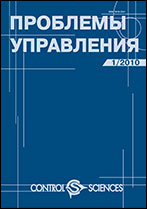|
This article is cited in 1 scientific paper (total in 1 paper)
Control the moving objects and navigation
Study of the effectiveness of the algorithm to optimize the flow of aircraft on landing
E. L. Kulida, V. G. Lebedev, N. A. Egorov
V.A. Trapeznikov Institute of Control Sciences of Russian Academy of Sciences, Moscow, Russia
Abstract:
The problem of aircraft landing sequence optimization is considered. The formal statement of the problem is presented of forming the optimal aircraft queue for landing, the main limitations and target functions. In order to obtain the solution in real time, the methods of optimization of the initial sequence are illustrated and the heuristic algorithm of the approximate solution of the problem is proposed. As the initial sequence for the algorithm to operate, the sequence is selected in that the aircraft land in the order of the arrival. In the process of applying the algorithm, the initial solution corresponding to the initial sequence cannot be worsened. Computational experiments are carried out in order to study the efficiency of the algorithm proposed. The calculating time and the quality are compared of the initial solution, the heuristic solution obtained using the proposed heuristic algorithm, and the optimal solution obtained using the standard CPLEX package. Noted is that for the problem of large dimension (with large number of aircraft) the optimal solution cannot be obtained, so the heuristic solution is compared with the initial one. Tests for intense aircraft flows are generated randomly. The proposed algorithm allows within a reasonable time either to obtain optimal (30–52% of cases) solutions of the problem or to significantly improve the initial solution.
Keywords:
aircraft sequences, objective function, optimal solution, heuristic algorithm, computational experiment.
Received: 05.03.2019
Revised: 05.07.2019
Accepted: 30.07.2019
Citation:
E. L. Kulida, V. G. Lebedev, N. A. Egorov, “Study of the effectiveness of the algorithm to optimize the flow of aircraft on landing”, Probl. Upr., 2019, no. 6, 63–69
Linking options:
https://www.mathnet.ru/eng/pu1167 https://www.mathnet.ru/eng/pu/v6/p63
|

| Statistics & downloads: |
| Abstract page: | 126 | | Full-text PDF : | 33 | | References: | 37 |
|




 Contact us:
Contact us: Terms of Use
Terms of Use
 Registration to the website
Registration to the website Logotypes
Logotypes









 Citation in format
Citation in format 